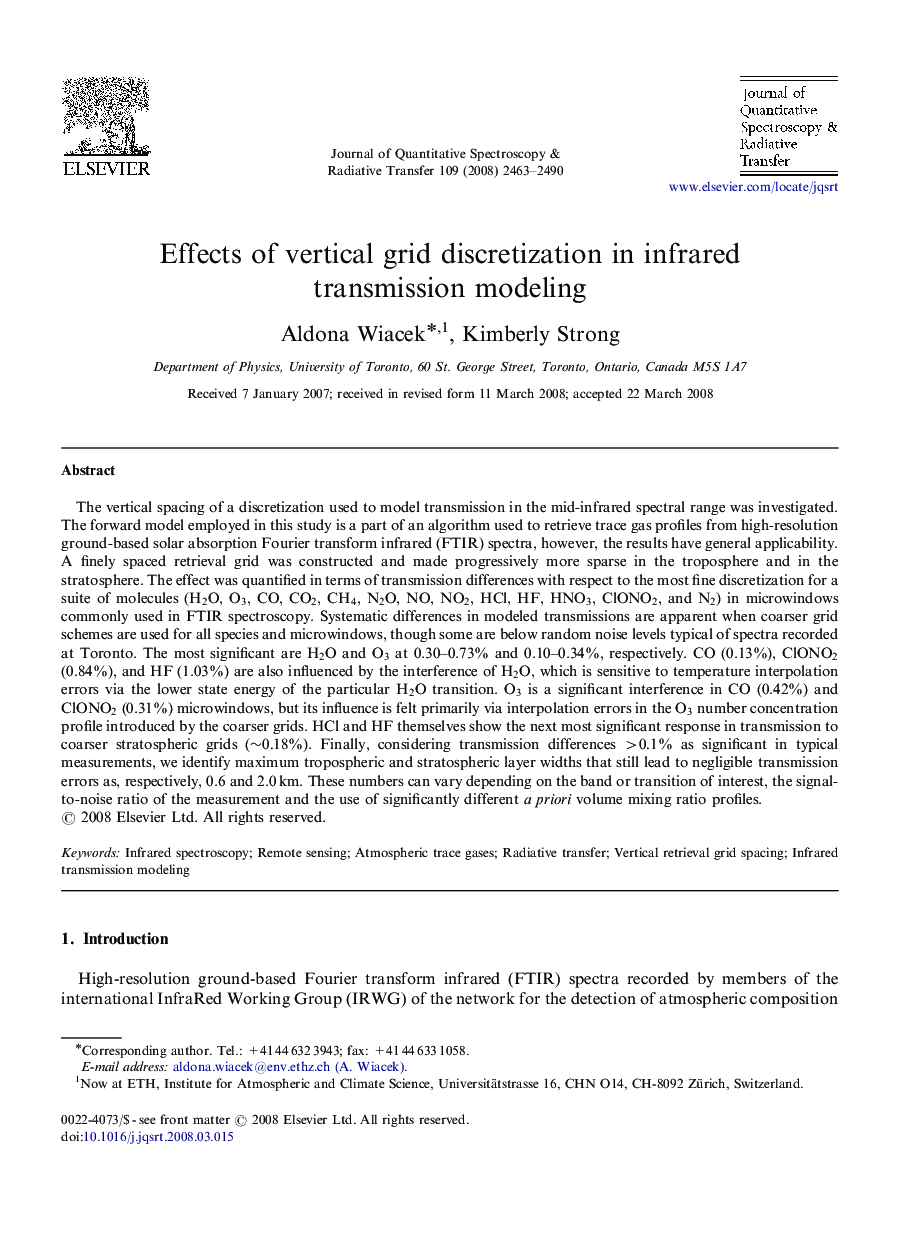| کد مقاله | کد نشریه | سال انتشار | مقاله انگلیسی | نسخه تمام متن |
|---|---|---|---|---|
| 5430384 | 1397399 | 2008 | 28 صفحه PDF | دانلود رایگان |

The vertical spacing of a discretization used to model transmission in the mid-infrared spectral range was investigated. The forward model employed in this study is a part of an algorithm used to retrieve trace gas profiles from high-resolution ground-based solar absorption Fourier transform infrared (FTIR) spectra, however, the results have general applicability. A finely spaced retrieval grid was constructed and made progressively more sparse in the troposphere and in the stratosphere. The effect was quantified in terms of transmission differences with respect to the most fine discretization for a suite of molecules (H2O, O3, CO, CO2, CH4, N2O, NO, NO2, HCl, HF, HNO3, ClONO2, and N2) in microwindows commonly used in FTIR spectroscopy. Systematic differences in modeled transmissions are apparent when coarser grid schemes are used for all species and microwindows, though some are below random noise levels typical of spectra recorded at Toronto. The most significant are H2O and O3 at 0.30-0.73% and 0.10-0.34%, respectively. CO (0.13%), ClONO2 (0.84%), and HF (1.03%) are also influenced by the interference of H2O, which is sensitive to temperature interpolation errors via the lower state energy of the particular H2O transition. O3 is a significant interference in CO (0.42%) and ClONO2 (0.31%) microwindows, but its influence is felt primarily via interpolation errors in the O3 number concentration profile introduced by the coarser grids. HCl and HF themselves show the next most significant response in transmission to coarser stratospheric grids (â¼0.18%). Finally, considering transmission differences >0.1% as significant in typical measurements, we identify maximum tropospheric and stratospheric layer widths that still lead to negligible transmission errors as, respectively, 0.6 and 2.0Â km. These numbers can vary depending on the band or transition of interest, the signal-to-noise ratio of the measurement and the use of significantly different a priori volume mixing ratio profiles.
Journal: Journal of Quantitative Spectroscopy and Radiative Transfer - Volume 109, Issue 14, September 2008, Pages 2463-2490